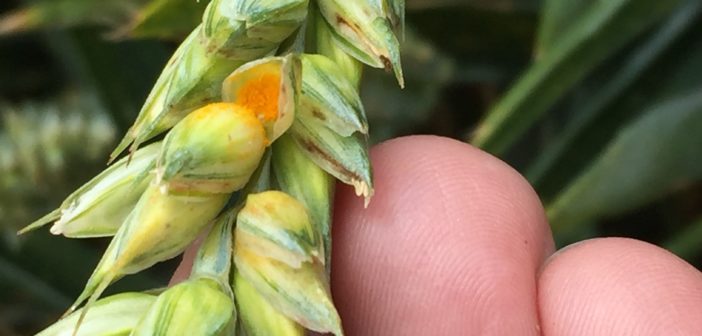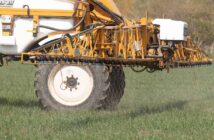As UK winter wheat crops were pressured with yellow rust following a season of mixed weather, the Frontier 3D Thinking site at Haywold, Yorkshire, carried out trials which have provided valuable data on tolerance to this key disease.
Christine Lilly, Frontier research and technical support manager, said that yield performance has been consistent with previous years, with varieties such as SY Insitor, RGT Saki, RGT Gravity, Gleam, KWS Colosseum and KWS Kerrin, but that several of these varieties are very susceptible to disease particularly this season by yellow rust.
“The weather patterns from early establishment through the growing season meant we saw unusually high cases of yellow rust, so we were able to truly see how varieties coped under disease pressure and the value of a targeted fungicide programme,” she explained.
The disease was present from February through to July, with higher levels than previously seen at the site with the disease present on the ear of some varieties, even when a robust fungicide programme had been applied.
Lilly said that the magnitude of disease presence across the site is most likely down to weather conditions and an increased number of susceptible varieties, including some where yellow rust had not been widespread in the past.
“As can be seen from graph, those varieties that gave high responses to fungicides in 2020 included KWS Kerrin, KWS Kinetic, Gleam, Shabras, RGT Wolverine (Europe’s first BYDV-resistant variety), KWS Zyatt and Skyfall,” Lilly noted, adding that these varieties should be monitored closely for onset of yellow rust and may require treatment in early spring, typically with a triazole.
She added: “2020 was challenging for all sorts of reasons; however, it did provide us with a much-increased database on yellow rust susceptibility. This data has highlighted the value of a comprehensive fungicide regime for supporting yield in many of our key varieties and will enable us to fine tune decision-making for 2021.”




